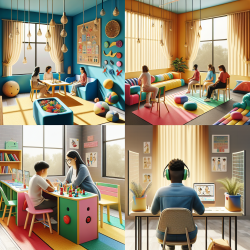In today's educational landscape, creating an inclusive and supportive environment is more important than ever. For students with sensory processing challenges, the school setting can sometimes be overwhelming. Schools that offer a sensory-friendly environment not only enhance the learning experience for these students but also promote inclusivity and understanding among all students and staff.
Understanding Sensory Challenges
Sensory challenges can arise from various stimuli within the school environment such as noise, bright lights, temperature fluctuations, and crowded spaces. These elements can be particularly challenging for students with autism or other sensory processing disorders. To create a more accommodating environment, it's crucial to identify these potential stressors and address them effectively.
Checklist for a Sensory-Friendly Environment
- Lighting: Ensure that the lighting is adjustable. If it’s not feasible in all areas, designate spaces where lighting can be dimmed to provide a quieter atmosphere.
- Noise Control: Minimize background noise by reducing the volume of music and other sounds. Consider providing alternatives to noisy hand dryers in restrooms.
- Crowd Management: Identify areas prone to crowding and find ways to minimize congestion. Inform students and staff about quieter times and offer alternative routes through the building.
- Temperature Regulation: Maintain consistent temperature levels throughout the school and allow adjustments where necessary.
Tangible Adjustments for Schools
The following tips can help schools make practical adjustments to support students with sensory needs:
- Sensory Maps: Provide maps highlighting busy or noisy areas and suggest alternative routes for those who need them.
- Sensory Stories: Create narratives that guide students through what they might see, hear, or smell in different parts of the school.
- Quiet Spaces: Designate quiet areas with low lighting and comfortable seating where students can retreat when overwhelmed.
- Sensory Times: Schedule specific periods during the day when sensory-friendly practices are emphasized, such as dimming lights or reducing noise levels.
The Importance of Staff Training
An essential component of creating a sensory-friendly environment is ensuring that staff are well-trained. Educators and support staff should be knowledgeable about sensory processing challenges and equipped with strategies to help students navigate their environment comfortably.
A proactive approach in addressing sensory challenges not only benefits students with disabilities but also fosters a compassionate school culture that values diversity and inclusion.
If you're interested in implementing these practices or learning more about creating a sensory-friendly environment in your school, please follow this link.










